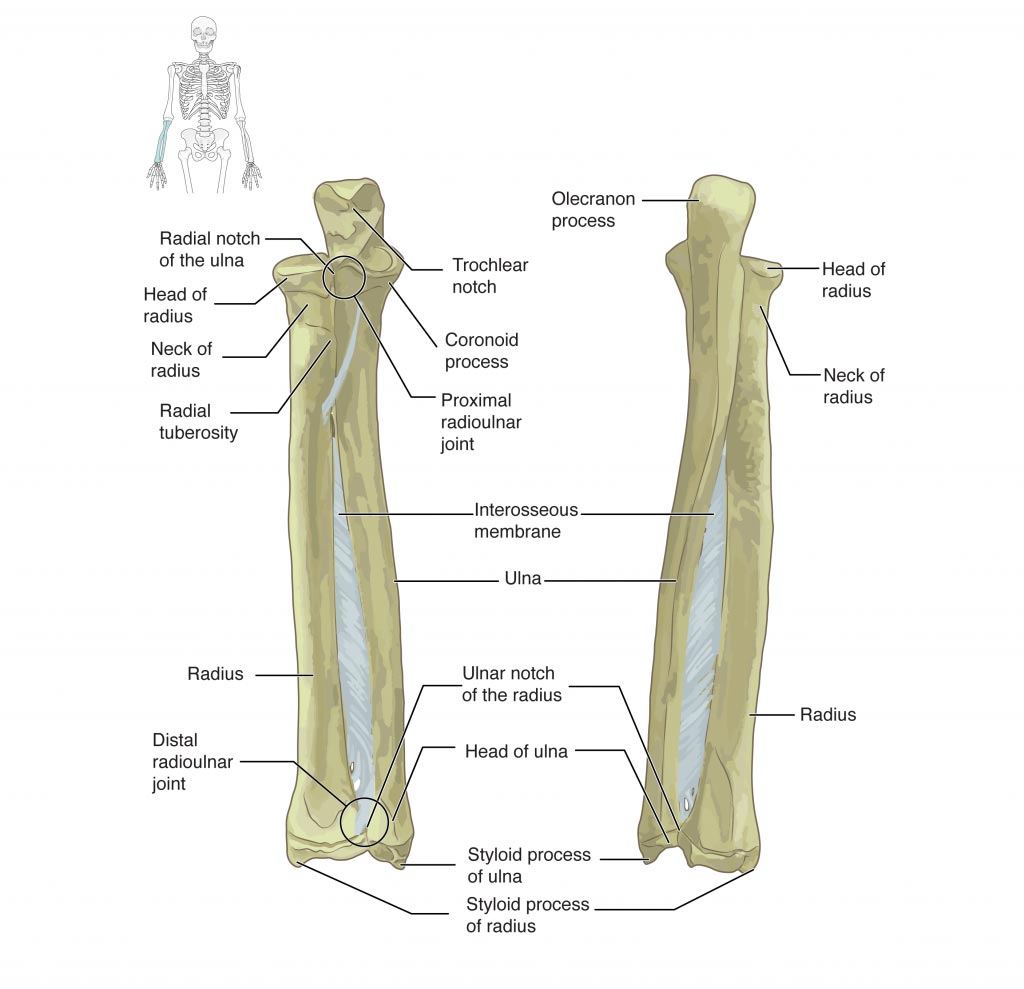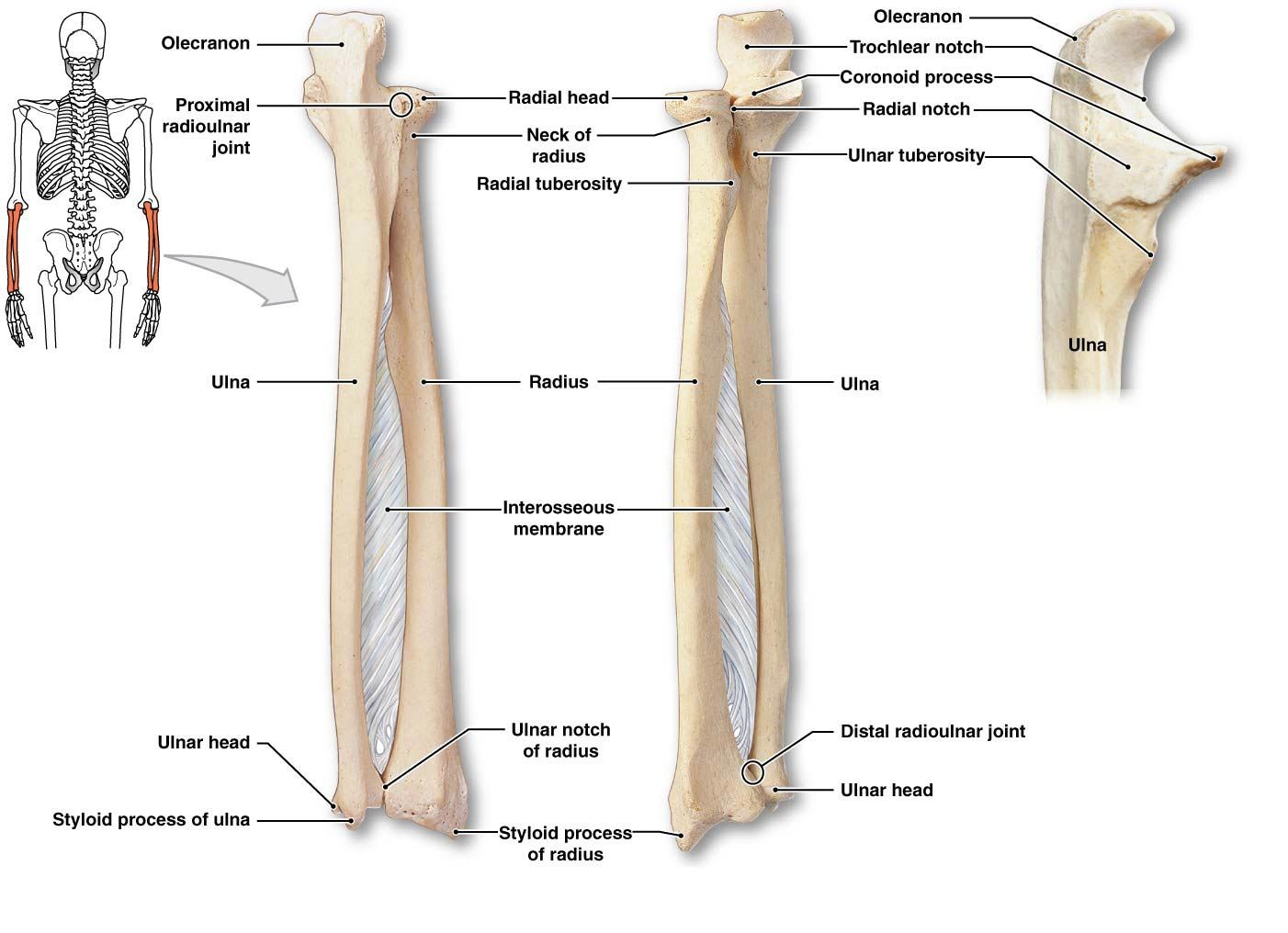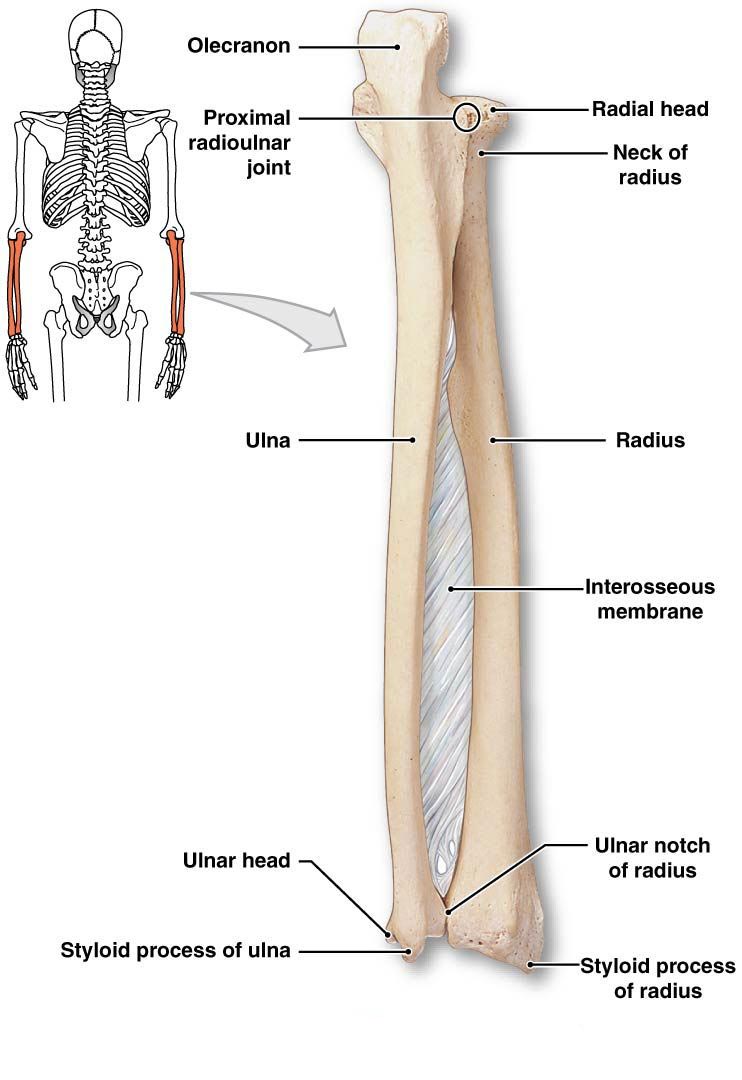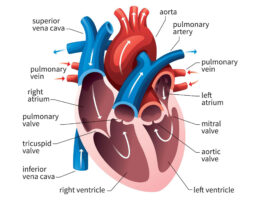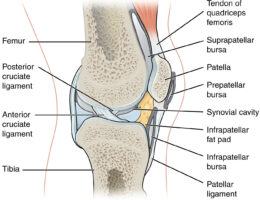The radius and ulna are two long bones located in the forearm of the human body. A labeled diagram of the radius and ulna may include the following parts:
- Radius: The radius is the shorter of the two bones in the forearm, located on the lateral side. It runs parallel to the ulna and articulates with the humerus and the carpal bones.
- Head of radius: This is the proximal end of the radius, which articulates with the capitulum of the humerus and the radial notch of the ulna.
- Neck of radius: This is the constricted part of the radius just below the head.
- Radial tuberosity: This is a rough, bumpy area on the medial side of the radius, where the biceps muscle attaches.
- Ulna: The ulna is the longer of the two bones in the forearm, located on the medial side. It articulates with the humerus, radius, and carpal bones.
- Olecranon: This is the proximal end of the ulna, which forms the bony prominence of the elbow.
- Trochlear notch: This is a deep groove on the proximal end of the ulna, which articulates with the trochlea of the humerus.
- Coronoid process: This is a bony projection on the ulna, which articulates with the humerus and helps to stabilize the elbow joint.
- Styloid process of ulna: This is a pointed bony projection at the distal end of the ulna.
The radius and ulna work together to enable movements of the forearm, wrist, and hand. The radius is responsible for rotation of the forearm, while the ulna helps to stabilize the elbow joint. Understanding the anatomy and function of the radius and ulna is essential for diagnosing and treating medical conditions related to the forearm and hand.
